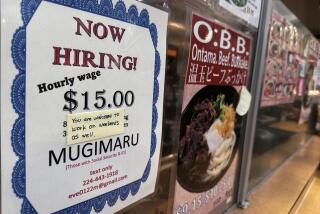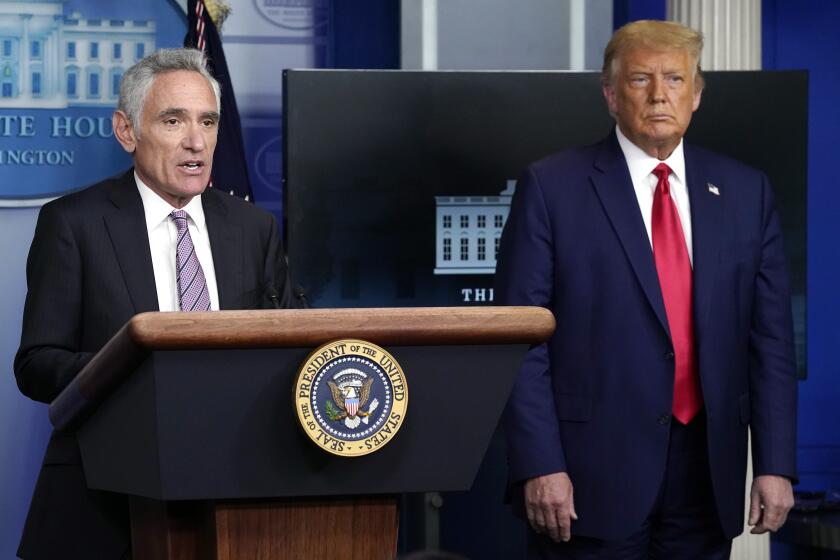Economy adds 169,000 jobs in August; unemployment rate eases to 7.3%
WASHINGTON -- The economy added 169,000 net new jobs last month and the unemployment rate ticked down to a near post-Great Recession low of 7.3%, its lowest level since the end of 2008, the Labor Department said Friday.
The job growth in August was slightly below analyst expectations though roughly in line with the average monthly gains this year.
But it came along with significant downward revisions for the previous two months, raising questions about whether economic conditions have improved enough for Federal Reserve policymakers to start reducing their stimulus efforts.
Job growth in July was revised down to a weak 104,000 from the initially reported 162,000, largely because of more summer layoffs in the auto industry than originally estimated, the Labor Department said.
June’s figure was revised down to 172,000 from an earlier estimate of 188,000.
QUIZ: How well do you understand the Fed stimulus?
The drop in the unemployment rate, from July’s 7.4%, came as labor force participation continued to fall, indicating more people have dropped out of the workforce.
Analysts had projected the government would report the economy added 175,000 net new jobs in August and that the unemployment rate would remain at 7.4%.
The private sector added 152,000 net new jobs in August, up from the revised 127,000 the previous month, the Labor Department said.
Manufacturing posted a strong rebound, adding 14,000 net new jobs last month after shedding 16,000 in July. Retail-sector job creation dropped to 44,000 from 48,800 in July.
The government sector added 17,000 net new jobs in August after dropping 23,000 the previous month.
On Thursday, payroll processing firm ADP said the private sector added 176,000 new jobs last month, down from a revised 198,000 in July.
Initial jobless claims have been trending down this year and in recent weeks have been well below the 350,000 level that economists say indicates moderate labor market growth.
Last week’s figure was down to 323,000, near its post-Great Recession low. And the four-week average fell to 328,500, its lowest level since October 2007.
Fed officials are watching all the incoming economic data closely as they weigh when to start pulling back on their unprecedented stimulus efforts.
Fed Chairman Ben S. Bernanke has said the central bank would start reducing its $85 billion in monthly bond purchases this year if the recovery continued to improve as expected. The Fed could decide to start tapering those purchases as early as its Sept. 17-18 policy meeting.
The bond buying program -- known as quantitative easing -- began in September 2012, when the unemployment rate was 8.1%. The goal was to push down long-term interest rates to induce more spending, boosting economic growth and hiring.
Bernanke said the Fed would end the bond buying when the unemployment rate dropped to 7%, which is forecast to happen in the middle of next year.
ALSO:
ECB President Mario Draghi ‘very cautious’ on Eurozone revival
Herbalife hires former L.A. Mayor Antonio Villaraigosa as advisor
Some jumbo loans are now even cheaper than conforming mortgages
More to Read
Inside the business of entertainment
The Wide Shot brings you news, analysis and insights on everything from streaming wars to production — and what it all means for the future.
You may occasionally receive promotional content from the Los Angeles Times.











